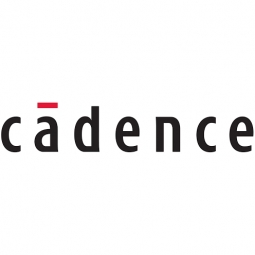Technology Category
- Analytics & Modeling - Digital Twin / Simulation
- Platform as a Service (PaaS) - Application Development Platforms
Applicable Industries
- Cement
- Telecommunications
Applicable Functions
- Product Research & Development
- Quality Assurance
Use Cases
- Transportation Simulation
- Virtual Reality
Services
- System Integration
- Testing & Certification
About The Customer
NetSpeed Systems is a provider of scalable, coherent, on-chip network (NoC) IPs to system-on-chip (SoC) designers across a wide range of markets, from mobile to high-performance computing and networking. The company's NoC platform delivers significant time-to-market advantages through a system-level approach, a high level of user-driven automation, and state-of-the-art algorithms. NetSpeed developed Gemini, its cache-coherent NoC solution, to address two key limitations in existing hardware-based coherency solutions: performance and scalability. Gemini supports all three levels of coherent traffic—cache coherent, I/O coherent, and non-coherent traffic—in a single NoC, offering high performance, scalability, and configurability for a wide range of applications.
The Challenge
NetSpeed Systems, a provider of scalable, coherent, on-chip network (NoC) IPs to system-on-chip (SoC) designers, faced significant challenges in designing its cache-coherent NoC solution, Gemini. The product's flexibility allowed for an endless number of configurations, necessitating an astronomical number of test cases. This posed a risk of introducing prolonged delays in the development schedule. Additionally, the coherency verification process was deeply stateful, requiring long runs to accumulate internal chip states and hit corner cases. Coherency bugs were unforgiving, with a single bug capable of bringing down the entire product. The vast verification space, including a large warm-up period and the need to expose bugs that manifest only after millions of cycles, added to the complexity. The company needed a solution that could provide comprehensive test coverage in this massive verification space, generate all possible NoC configurations, provide an intelligent, coordinated stimulus for the test cases, and enable efficient debugging and reproduction of errors.
The Solution
NetSpeed Systems turned to Cadence's Palladium XP acceleration/emulation platform as part of its multi-layered approach to exhaustively verify Gemini. The company adopted a 'depth and breadth' verification strategy that used Cadence Incisive simulation to quickly cover large numbers of configuration and emulation to validate complex time-dependent scenarios. The Palladium XP platform allowed NetSpeed to run more realistic workloads and test more complex SoC power interactions that were not possible in simulation. Self-checking stimulus loaded onto the Palladium XP platform enabled running billions of instructions, helping NetSpeed reach further faster and flush out elusive bugs. The methodology also enabled NetSpeed to replay emulation runs in Incisive simulation, matching every cycle between the two. NetSpeed used its in-house NocWeaver software to generate more than 1000 NoC designs every night. Using the Palladium XP platform, NetSpeed was able to run much longer, exhaustive tests. Implementation and bring-up of the Palladium testing environment took less than a week, and testing that would normally have spanned weeks was completed in minutes.
Operational Impact
Quantitative Benefit

Case Study missing?
Start adding your own!
Register with your work email and create a new case study profile for your business.
Related Case Studies.

Case Study
System 800xA at Indian Cement Plants
Chettinad Cement recognized that further efficiencies could be achieved in its cement manufacturing process. It looked to investing in comprehensive operational and control technologies to manage and derive productivity and energy efficiency gains from the assets on Line 2, their second plant in India.

Case Study
Vodafone Hosted On AWS
Vodafone found that traffic for the applications peak during the four-month period when the international cricket season is at its height in Australia. During the 2011/2012 cricket season, 700,000 consumers downloaded the Cricket Live Australia application. Vodafone needed to be able to meet customer demand, but didn’t want to invest in additional resources that would be underutilized during cricket’s off-season.

Case Study
SKT, Construction of Smart Office Environment
SK T-Tower is the headquarters of SK Telecom. Inside the building, different types of mobile devices, such as laptops, smartphones and tablets, are in use, and with the increase in WLAN traffic and the use of quality multimedia data, the volume of wireless data sees an explosive growth. Users want limitless Internet access in various places in addition to designated areas.










